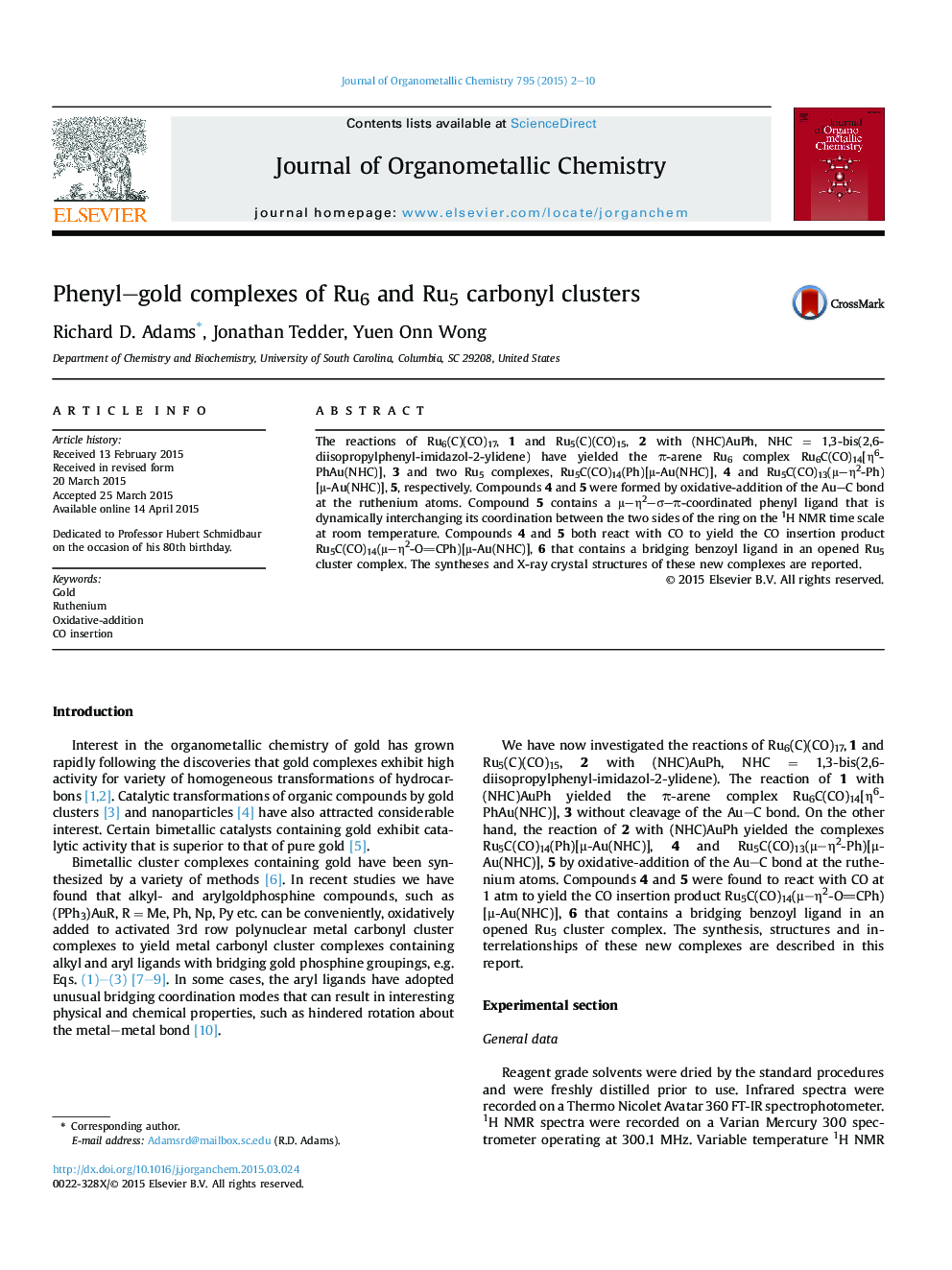| کد مقاله | کد نشریه | سال انتشار | مقاله انگلیسی | نسخه تمام متن |
|---|---|---|---|---|
| 1323374 | 1499848 | 2015 | 9 صفحه PDF | دانلود رایگان |

• Oxidative-addition of the Au–C bond to a ruthenium carbonyl cluster complex.
• A σ–π-coordinated phenyl ligand that dynamically interchanges its coordination between the two sides of the ring.
• CO insertion into a Ru–phenyl bond to form a bridging benzoyl ligand in an opened Ru5 cluster complex.
The reactions of Ru6(C)(CO)17, 1 and Ru5(C)(CO)15, 2 with (NHC)AuPh, NHC = 1,3-bis(2,6-diisopropylphenyl-imidazol-2-ylidene) have yielded the π-arene Ru6 complex Ru6C(CO)14[η6-PhAu(NHC)], 3 and two Ru5 complexes, Ru5C(CO)14(Ph)[μ-Au(NHC)], 4 and Ru5C(CO)13(μ–η2-Ph)[μ-Au(NHC)], 5, respectively. Compounds 4 and 5 were formed by oxidative-addition of the Au–C bond at the ruthenium atoms. Compound 5 contains a μ–η2–σ–π-coordinated phenyl ligand that is dynamically interchanging its coordination between the two sides of the ring on the 1H NMR time scale at room temperature. Compounds 4 and 5 both react with CO to yield the CO insertion product Ru5C(CO)14(μ–η2-OCPh)[μ-Au(NHC)], 6 that contains a bridging benzoyl ligand in an opened Ru5 cluster complex. The syntheses and X-ray crystal structures of these new complexes are reported.
The new gold–ruthenium complexes Ru6C(CO)14[η6-PhAu(NHC)], 3 and Ru5C(CO)14(Ph)[μ-Au(NHC)], 4 and Ru5C(CO)13(μ–η2-Ph)[μ-Au(NHC)], 5, have been synthesized and structurally characterized. Compounds 4 and 5 react with CO to yield the benzoyl bridged complex Ru5C(CO)14(μ–η2-OCPh)[μ-Au(NHC)], 6.Figure optionsDownload as PowerPoint slide
Journal: Journal of Organometallic Chemistry - Volume 795, 15 October 2015, Pages 2–10